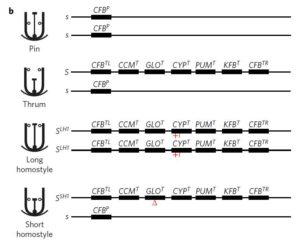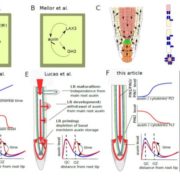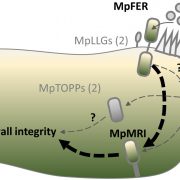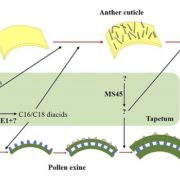Genetic basis of primrose floral dimorphism
 Self-fertilization in Primula is avoided by the production of two flower forms (morphs), one with a long style in which the stigma is elevated above the anthers (the L morph or pin) and one with a short style in which the anthers are well above the stigma (the S morph or thrum), although there are also populations in which the anther and stigma are of the same height (either as long homostyle or short homostyle). The S locus is a complex genetic locus known to specify the different flower forms. Li et al. showed that thrums (S/s) carry a form of the S locus that has more genes than the form found in pins (s/s). One of the thrum-specific genes CYP encodes a cytochrome P450 enzyme shown recently by Huu et al to break down brassinosteroid hormones, thus accounting for the shorter styles in the thrums. Li et al. also show that homostyles arise from alterations in the S locus, specifically in the CYP or GLO genes. eLIFE 10.7554/eLife.17956 and Nature Plants 10.1038/nplants.2016.188
Self-fertilization in Primula is avoided by the production of two flower forms (morphs), one with a long style in which the stigma is elevated above the anthers (the L morph or pin) and one with a short style in which the anthers are well above the stigma (the S morph or thrum), although there are also populations in which the anther and stigma are of the same height (either as long homostyle or short homostyle). The S locus is a complex genetic locus known to specify the different flower forms. Li et al. showed that thrums (S/s) carry a form of the S locus that has more genes than the form found in pins (s/s). One of the thrum-specific genes CYP encodes a cytochrome P450 enzyme shown recently by Huu et al to break down brassinosteroid hormones, thus accounting for the shorter styles in the thrums. Li et al. also show that homostyles arise from alterations in the S locus, specifically in the CYP or GLO genes. eLIFE 10.7554/eLife.17956 and Nature Plants 10.1038/nplants.2016.188










Leave a Reply
Want to join the discussion?Feel free to contribute!